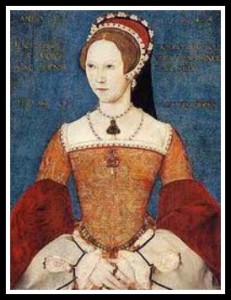Bloody Mary
Queen of England, Mary I (18 February 1516 – 17 November
1558) was the eldest daughter of
Henry VIII by Catherine of
Aragón. When Edward VI died, Mary secured the crown without difficulty in spite
of the conspiracy to substitute Lady Jane Grey. In 1554 Mary married Philip II
of Spain, and as a devout Roman Catholic obtained the restoration of papal
supremacy and sanctioned the persecution of Protestants. The number of
executions earned her the name 'Bloody Mary'. She was succeeded by her
half-sister Elizabeth I.
Mary ruled for five years. Her
relationship with her husband was also strained- he didn’t seem to be in it for
more than political gain, and she was unable to provide an heir. By the end of
her life, he was living and ruling in Spain and their time together had been
minimal at best.
Mary died at the age of 42, and
Elizabeth I was crowned. Mary’s original tomb was ruined over time. When
Elizabeth died, James I buried both sisters together in the same tomb and that
is where they lie now.

This day is also a birthday of an English manager, actor, and playwright, Wilson Barrett. He was born in1846.
ReplyDeleteWith his company, Barrett is credited with attracting the largest crowds of English theatregoers ever because of his success with melodrama, an instance being his production of The Silver King (1882) at the Princess's Theatre of London.
The historical tragedy The Sign of the Cross (1895) was Barrett's most successful play, both in England and in the United States.
A Bloody Mary is also a popular cocktail containing vodka, tomato juice, and usually other spices or flavorings such as Worcestershire sauce, Tabasco sauce, piri piri sauce, beef consommé or bouillon, horseradish, celery, olive, salt, black pepper, cayenne pepper, lemon juice, and celery salt. It has been called "the world's most complex cocktail."
ReplyDeletePeter Fryer (18 February 1927 – 31 October 2006) was an English Marxist writer and journalist.
ReplyDeleteIn 1948 Fryer had covered the arrival in Britain of settlers from the Caribbean on the Empire Windrush. His interest in their experiences ultimately resulted in Staying Power: The History of Black People in Britain (1984). Two short related books, originally given as lectures, are also in print: Aspects of British Black History and The Politics of Windrush.
While critical attention has tended to focus on Hungarian Tragedy and Staying Power, other books by Fryer, including Private Case - Public Scandal: Secrets of the British Museum Revealed (1966), Mrs Grundy: Studies in English Prudery (1963), and The Birth Controllers (1965), were also ground-breaking studies in their time, opening subjects to wider debate.
Fryer's Rhythms of Resistance, a study of the African musical heritage in Brazil, was published in 2000. Fryer's interest in listening to and playing music came together with his travels in Brazil with his Brazilian son-in-law. Fryer himself was a leading authority on blues music and related music in Africa and South America, and was a highly accomplished blues pianist. He performed regularly until his death at the Caipirinha jazz bar in North London.
As for Wilson Barrett, he died at London, on 22 September 1904. Thanks largely to the success of the Sign of the Cross, he left £57,000, even after periods of relative failure, mainly during his later years managing the Old Court Theatre.[7] His grandson, also named Wilson Barrett, became an actor director with the Brandon-Thomas Company before starting his own repertory in 1939, the Wilson Barrett Company, which based itself in Edinburgh`s Lyceum, Glasgow at the Alhambra Theatre Glasgow and for a time in Aberdeen. It also performed on television, at the Edinburgh International Festival and, by invitation, in South Africa.The company was retired in 1954.
ReplyDelete